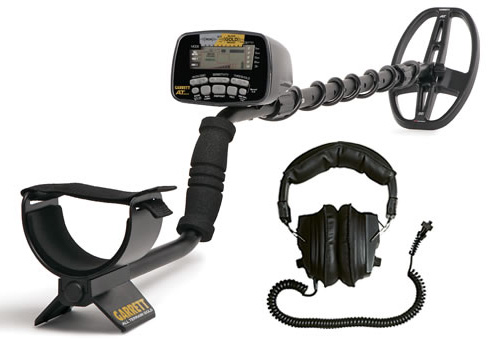Thursday, April 28 2022
Over the years, metal detecting has continued to become one of the most popular forms of gold prospecting, especially with folks new to prospecting. Panning, sluicing, and highbanking can be lucrative ways to recover the shiny stuff, but when you’re first bitten by the gold bug, you might opt for the simplest, quickest approach — swinging a detector. Not only is it physically easier than processing heavy dirt and rock, it offers the added bonus of finding more than just gold, such as coins, jewelry, relics, and other buried metallic treasures, too. Aside from record gold prices, another reason that people are eager to try metal detecting i The basic premise of metal detecting is allowing the detector to introduce an energy field into the ground, and allowing that field the opportunity to return any target information that it finds via the detector’s control box. The two most common types of metal detectors to consider: VLF (very low frequency) metal detectors are the most common type of detector. They work by sending out energy that is either reflected off or conducts through an object containing metal. The device then measures how long it takes for the signal to return. Frequency refers to how fast a metal detector sends signals into the ground. As the name indicates, these detectors use very low frequency coils (generally below 30 kHz.) The outer coil serves as the transmitter and the inner coil serves as a receiver. PI (pulse induction) metal detectors send energy into the ground and measure the decay of that signal. Anything that slows or speeds the decaying signal is a target. This technology sends powerful, short bursts (pulses) of current through a coil of wire. Each pulse generates a brief magnetic field. When the pulse ends, the magnetic field reverses polarity and collapses very suddenly, resulting in a sharp electrical spike. This spike lasts a few microseconds (millionths of a second) and causes another current to run through the coil. This current is called the reflected pulse and is extremely short, lasting only about 30 microseconds. Another pulse is then sent and the process repeats. Generally speaking, the higher the price of a metal detector, the more features it will have. More features translate into more knobs. The more features and/or knobs that a detector has, the more you are able to tune the metal detector to the type of hunting conditions that you are likely to encounter. With that being said, the downside to a large number of features is that even though you are able to fine tune the detector to match the local conditions, there are also more ways of setting up the detector incorrectly. Setting up a machine "wrong" may result in a decrease in depth and sensitivity and your $900 metal detector may be outdone by a $200 model! It is critical to read the owner’s manual that comes with your detector and learn to use it properly for maximum results. Keep in mind when shopping for a detector that gold detectors are not necessarily higher in cost, but they are built with a higher sensitivity to detecting gold nuggets, have better ground balancing and discrimination abilities, and could be the best option for you. The #1 question that everyone asks is “What is the best metal detector?” Unfortunately, there is no one single answer. Each metal detectorist has specific needs that cannot be met by one single detector. The easiest way to find the "best" detector is to evaluate YOUR detecting style, your experience level, what items you hope to find, and the time that you will spend metal detecting. After taking all of these things into consideration, then you will be able to find a metal detector that fits your needs and your budget. If you’re wondering how deep a detector can detect, realize that there are too many variables to be able to unequivocally quote a depth for any particular brand or model. The size of the target, how it is positioned, ground mineralization, ground moisture, and more are just some of the factors that affect the depth of a detector. When treasure hunting with your detector for coins, relics, or jewelry, use your imagination as to where to hunt — anywhere people are likely to have lost something or left something behind is a likely place to dig up good finds—playgrounds at schools and parks, picnic areas, campgrounds, new construction sites, ghost towns, old homesteads, woodlands, plowed fields and pastures, sports fields, showgrounds, and racetracks, swimming holes, beaches, jetties, and piers. Right under your feet might be a good place to start; you never know what you'll find in your own backyard! Remember to always know local laws before using your metal detector. Many state and national parks and historic sites do not permit detecting. Be sure to first ask permission to treasure hunt on private property. If you want to get out there this year and get your share of the gold but the idea of panning, sluicing, highbanking, or using another piece of gold mining equipment just isn't your idea of fun, that's OK. Consider a metal detector instead. Since the lure of uncovering a gold nugget of any size is addictive, you'll see people in known gold bearing areas swinging a detector, listening intently through their headphones for that magic tone that says DIG. Go ahead and join the fun! Today it is easier and more productive than ever to go treasure hunting. The metal detecting hobby has gone to a whole new level using state of the art technology that makes metal detecting equipment more high tech than ever. |
|
Nugget of News Blog |






